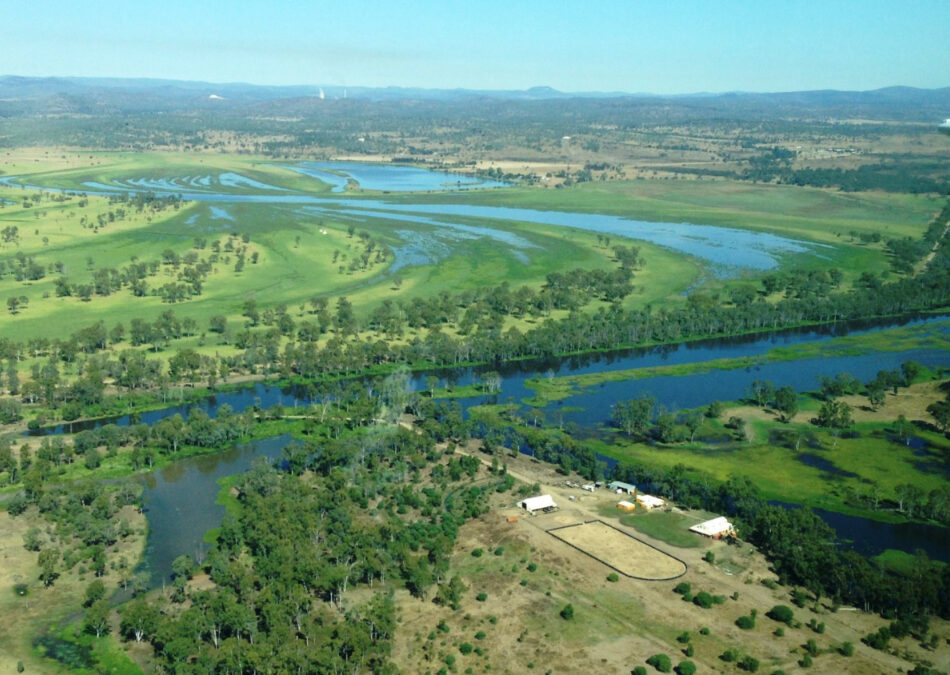A new approach is needed to manage shared water resources in Northern Australia (the North), to ameliorate the impacts of drought and flooding events and to provide opportunities and confidence to produce new agricultural products for high value markets.
Following a period of foundational research activity, including a series of sector based situational analyses, the Cooperative Research Centre for Developing Northern Australia (CRCNA) is now in a position to consolidate its approach and invest in a number of large-scale initiatives to underpin its role in developing the north.
One of these initiatives is progressing the Water Security for North Australia Program (WSNA) which presents an opportunity to jointly deliver a series of flagship research activities for the CRCNA across several ‘game-changing’ research initiatives that will deliver long-term benefit for the region.
The Northern Australia University Alliance (NAUA) Charles Darwin University (CDU), CQUniversity Australia (CQU) and James Cook University (JCU) have partnered with the CRCNA to undertake a research-focused approach to this challenge by building on recent collaborative regional research proposals.
The partnership acknowledges the full potential of Northern Australia and this co-investment is a vital opportunity to demonstrate that economic growth and environmentally healthy and sustainable eco-systems can coexist in a water context.
The objective of the program of research activities is to de-risk the Northern Australian investment and development landscape by improving water sustainability across the region and providing a pathway for the future development of key sectors as well as improving the health and wellbeing of the north’s communities.
Initially the partnership will support the CRCNA to identify key research priorities and those opportunities that can be sensibly advanced within Northern Australia.
Identifying technologies and solutions for tropical, tropical savannas and remote arid areas are much less developed or non-existent. Unfortunately, despite the massive investment in Australia and globally, the water management challenges peculiar to the north of Australia are still to be addressed.
Such challenges include: a general lack of water planning, remote and disparate small communities, a lack of skilled labour, harsh environments, broad stakeholder diversity and cultures, limited models and capacity for extension and adoption, distance from high-value markets, emerging and poorly understood water-borne diseases, and exploring potential improvements in farming management practices to increase productivity potentials, demonstrate environmental sustainability and maintain social license.
Through the partnership and subsequent research initiatives based on de-risking investment, activating the indigenous estate and commodity integration, the CRCNA is looking to identify feasible innovative solutions to address several key themes emerging from the activity to date.
As an example, CRCNA is investigating the research theme ‘Platforms for water trading in Northern Australia’ by funding the current project ‘Scaling Next Generation Water Markets in Northern Australia’ which is exploring the interconnectedness between water market design and institutional governance goals to address water security and social equity issues relating to water access.
Additional identified research themes include;
- ‘Innovation in Water Storage and Extraction’ – Finding solutions in off-stream capture and storage, potential for ground water system use, under-ground storage and recharge and reducing storage water losses.
- ‘New Water Efficient Cropping Systems’ – Developing high value, integrated production systems, development and enhanced supply chains and value adding opportunities and establishment of effective water and ecosystem service markets.
- ‘New Catchment Scale Development Models’ – Undertaking new water allocation and water development planning, exploring low impact catchment development models and meeting and exceeding reef regulation in new development
- ‘Mobilising Indigenous Water Resources’ – Supporting traditional owners through good practice approaches to identifying cultural values and Indigenous allocations in water plans. The work aims to help secure safe and reliable water supplies for Indigenous and rural communities.
- ‘Lifting Human Capacity and Skills in Water Sector’ – Developing new approaches and partnerships to lift human capacities and skills to help deliver water security in Northern Australia
Ultimately the CRCNA, through this Alliance will fund research to develop innovative new tools, processes and systems which address key industry and end-user identified development of northern water resource challenges.
All project synthesis through the partnership will be place-based to ensure practicality is realised and incorporated into research outputs to provide true value to multiple end users, but also incorporate integration at a whole of Northern Australia level perspective.
Future activity will be focused on enhancing and improving water security across Northern Australia. Ensuring the north has the regionally appropriate and forward-facing policy frameworks, technologies, skilled workers, shared management culture and knowledge needed to sustainably expand utilisation of its water resources. Mitigate the impacts of weather events and drought and provide opportunities to grow high-value agricultural products for existing and emerging markets.


